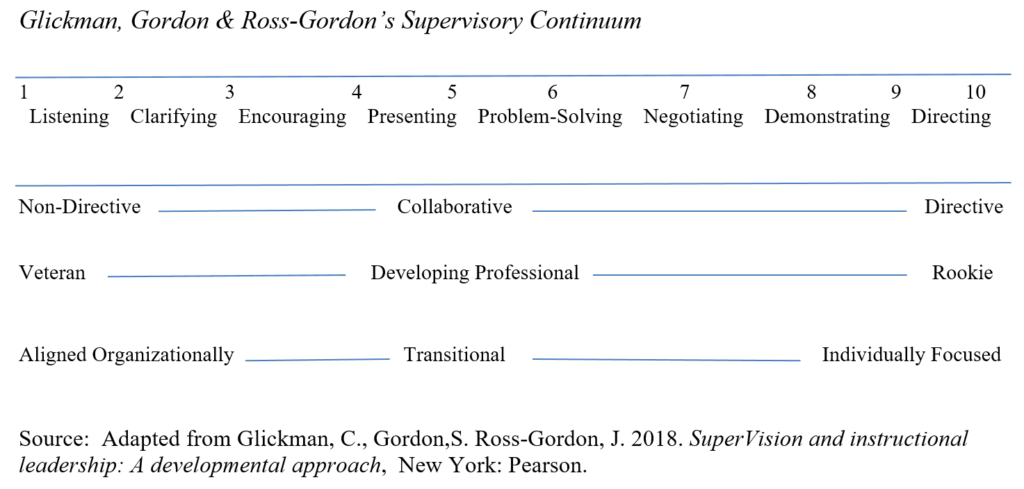Quick note before we start today’s blog. Congratulations to the winners of the “summer series” book giveaway contest! Each will receive a free copy of Accelerated Wisdom: 50 Practical Insights for Today’s Superintendent. Our winners were Katherine Greenich, Superintendent of the Knox County Career Center Schools located in Mount Vernon, OH and Dr. Andrea Kane, Superintendent of the Queen Anne’s County Public Schools in Centreville, MD.
In response to my request for “summer series” topics one of our colleagues, Cheryl Jordan, Superintendent of Milpitas Unified School District (Milpitas, CA), posed a question regarding how to coach our cabinet team members when they are at varied levels in their leadership development. Although summer has yet to begin, I thought this was a perfect follow up topic to the recent three part series on the superintendent/cabinet team.
I believe the key is that we must coach our cabinet members from two different perspectives simultaneously: 1. developing the individual’s leadership skill sets, 2. working to align the individual to the team’s established priorities.
Treating our cabinet members’ leadership skill development equally, which is often our approach, is typically not equitable. In other words, we must seek to understand each cabinet member’s unique background, experiences, abilities, and philosophical alignment prior to determining how we can coach them to high performance.
Alignment? Yes, alignment. My added emphasis here relates to the fact that to establish an effective superintendent/cabinet team, and to coach each member to high levels of performance, we must develop both the individual and the individual as a team member.
Most superintendents consider perspective 1 when coaching their cabinet team members, but rarely perspective 2. The reason for this is that we think about coaching as an individual leadership development process, but I believe we must expand our paradigm to also focus on helping the person become an effective, aligned team member.
I am not promoting that all cabinet team members should think alike, rather that everyone buys into the established goals and priorities of the team and is pulling in the same direction. The bottom line is that developing individuals as team members is part of the coaching process too.
In my experience it is this second perspective which can be most difficult to address, although it can have a positive impact on how the team functions and often how the person grows individually. If a cabinet member is unwilling to be coached into alignment with the goals and priorities of the team you should consider removing the individual. Failure to do so will lead to distraction, dysfunction and turmoil.
Ok, now let’s shift to the actual process of coaching our cabinet team members to high levels of performance. Step 1 is to create a starting point for coaching each cabinet team member. A framework I have found helpful in this regard is Glickman, Gordon & Ross-Gordon’s “supervisory continuum”, which was developed to guide teachers, but I have adapted to fit the administrative context. See the graphic provided below.

You will note that at one end of the continuum, where the cabinet member is inexperienced, lacks necessary skills, or may be out of alignment with the group’s priorities, you as superintendent will use a more directive approach in their leadership development. At the other end of the continuum is the cabinet member who is experienced, highly skilled and works in alignment with the team’s priorities. A non-directive approach is the best way to go with this individual based upon their proficiency.
Please note that highly skilled and experienced is not necessarily consistent with strong team alignment. Again, this is why we must look at all factors in determining where each individual fits on the continuum and differentiate our coaching methods based upon this analysis.
It may be that each individual has multiple starting points. As an example, maybe the team member is strong in technical knowledge for their position, but does not understand how to effectively implement change. In this case the team member will start at multiple places along the continuum depending upon the skill being coached.
Step 2 is to work with the individual to set goals, based upon identified areas of growth, which will lead them toward high performance. Many school districts have a mechanism through which goals can be established, measured, and at times compensated. It could be through the evaluation system, or the performance pay plan, but if none of these structures exist superintendents can simply create their own.
Step 3 is to follow a continuous improvement cycle which focuses on monitoring progress toward goal achievement, making necessary adjustments as needed, and providing kudos or suggestions when appropriate. As coaches we should have a vision of what high performance looks like in each area where a goal is set. We must also be able to break down the steps on the path to high performance so that our team member has markers to indicate they are headed in the right direction.
To summarize the process of coaching your cabinet team members to high performance, remember that it is not just focusing on their individual leadership skills, but also their proficiency in working as a member of a team.
Next, reflect on the unique backgrounds, experiences and dispositions of each cabinet member and establish a starting point (or multiple starting points) for their leadership development along a continuum. Once placed along the continuum, work with the team member to set goals which will lead to higher performance in the identified areas.
Finally, establish a continuous improvement cycle so that the team member grows to their full potential as a leader over a period of time.
I have identified one process which superintendents can follow to coach their cabinet team members to high performance. What other methods have you observed to be successful in achieving this goal?